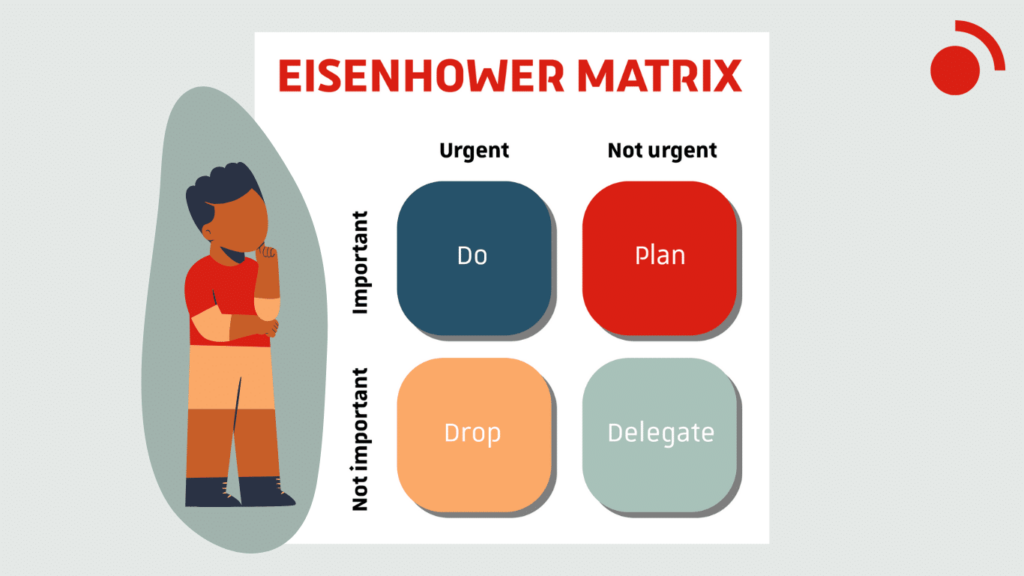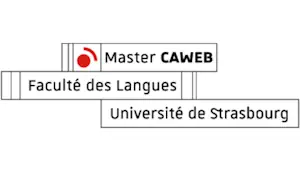Put an end to your to-do list, use the Eisenhower Matrix

Writing a to-do list is a common practice in our daily life, however having a list does not guarantee that you know where to start, or that you will get to the end of it. This is when you should use the Eisenhower matrix.
But what is it? Briefly, it’s a way to help you prioritize your tasks and make decisions about them. It is a powerful tool to save time, your energy and make you more efficient.
How does the Eisenhower box work?
The Eisenhower matrix – or box – was created on a famous phrase of Dwight David Eisenhower, the 34th President of the United States:
“I have two kinds of problems, the urgent and the important. The urgent are not important, and the important are never urgent.”
It means different tasks may be categorized on two main factors:
Their importance and their urgency. That leads to the two axes of the Eisenhower box: one vertical “importance” and one horizontal “urgency”. Then appears the following 4 quadrants in which you put and organize all your tasks:
1st Quadrant: urgent and important – do it yourself, do it immediately
To simplify, tasks that are in the 1st quadrant are urgent and essential for you or a third party (client, manager…). They have a great impact on your projects and your objectives, such as resolving a work conflict. They must be done, and quickly!
2nd Quadrant: urgent but less important – delegated tasks
They’re often considered “smaller tasks”. But you can’t postpone them, even if it would not harm your projects in progress. They can be important tasks for others and can be delegated to another person, maybe less experienced than you. Some of these tasks could be: giving some information to a colleague, a client, or a provider, making phone calls, or writing regular e-mails…
3rd Quadrant: important but not urgent – scheduled tasks
The tasks are important for your company, your team, or yourself. The deadlines are not too short. It may be easy to put them aside, considering you would deal with them later… and forget about them. That is why, we recommend you plan these tasks precisely during the following weeks, or the following months. Then you will surely have the time you need to do them.
These tasks could be preparing an action plan, a business plan, training courses, or monitoring technological development. It is also the tasks that haven’t a determined deadline yet, but which must be done to achieve your goals.
4th Quadrant: non-important and non-urgent – may be abandoned tasks
As they are the last tasks, they could be abandoned or left aside without worrying, at least until the most urgent tasks are settled or solved.
How to choose between “urgency” and “importance”?
If two tasks are urgent and important, which one should be done first? There is no perfect answer, it’s on a case-by-case basis. Most of the time, what makes a task urgent depends on the context of this task more than its content. This may be due to an unforeseen event, for example. However, an important task is usually based on long-term work. That is why it is not a good practice to delay an important task for an urgent one, as the quality of the important task would be affected.
As you can see, the Eisenhower matrix is not only a way to organize your tasks, but to delegate some of them. It is also a useful tool that can be used in many fields, as much in private life as in professional one. That is why it’s also used in scrum agile project management, like the scrum method.
If you want to learn more about project management, don’t hesitate to visit our website Master CAWEB!
References :
https://www.manager-go.com/efficacite-professionnelle/dossiers-methodes/matrice-eisenhower
https://www.leblogdudirigeant.com/la-matrice-eisenhower/
https://asana.com/resources/eisenhower-matrix
Other articles
-

Discover our online Master in digital communication
-

How and Why Google Plans to Fight Against AI Generated Content
-

Understanding the Difference Between UX Design and UI Design
-

Caweb Goes USA: en route to Silicon Valley
-

Freelance translator or employed translator: which job is better for translation students?


